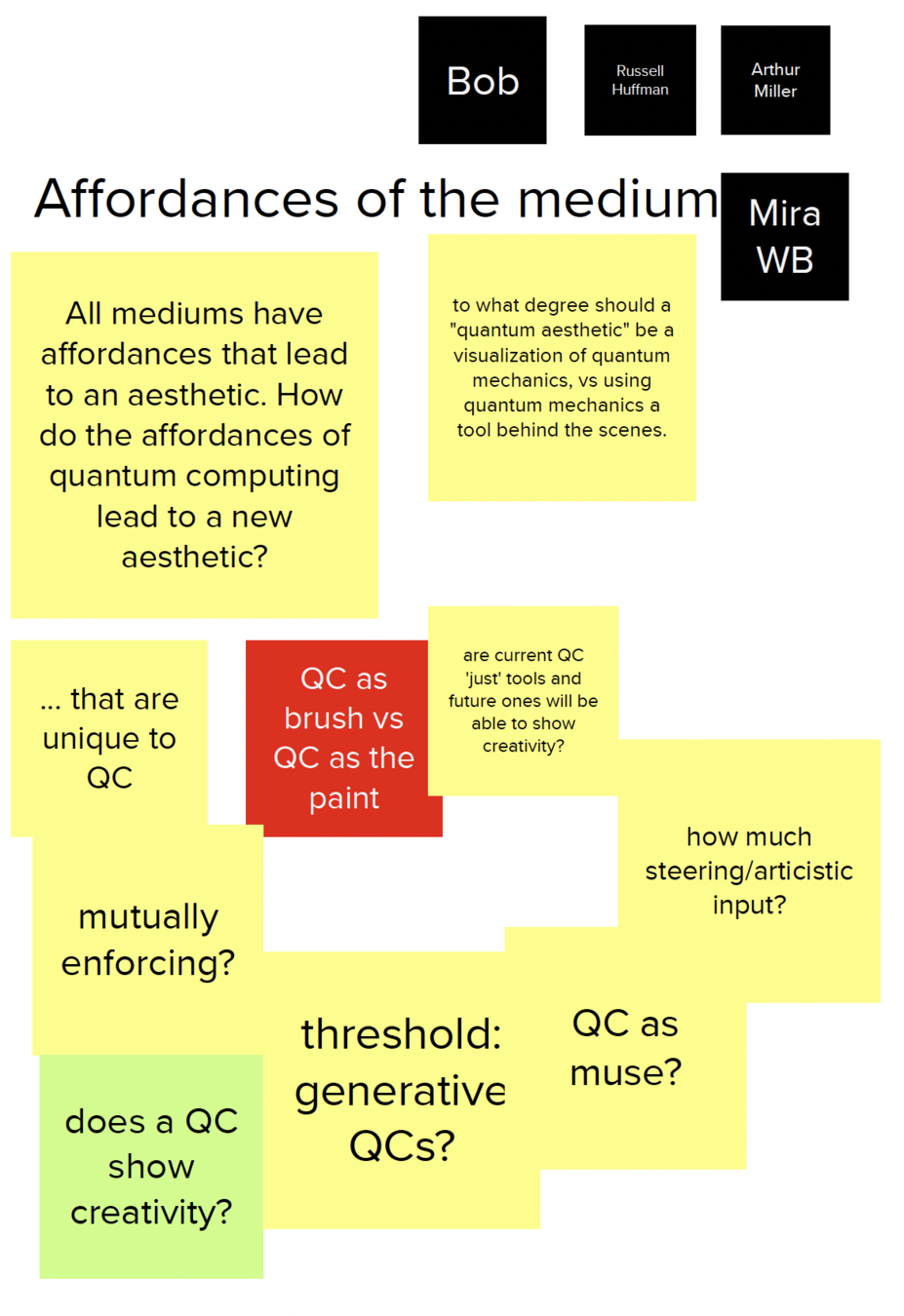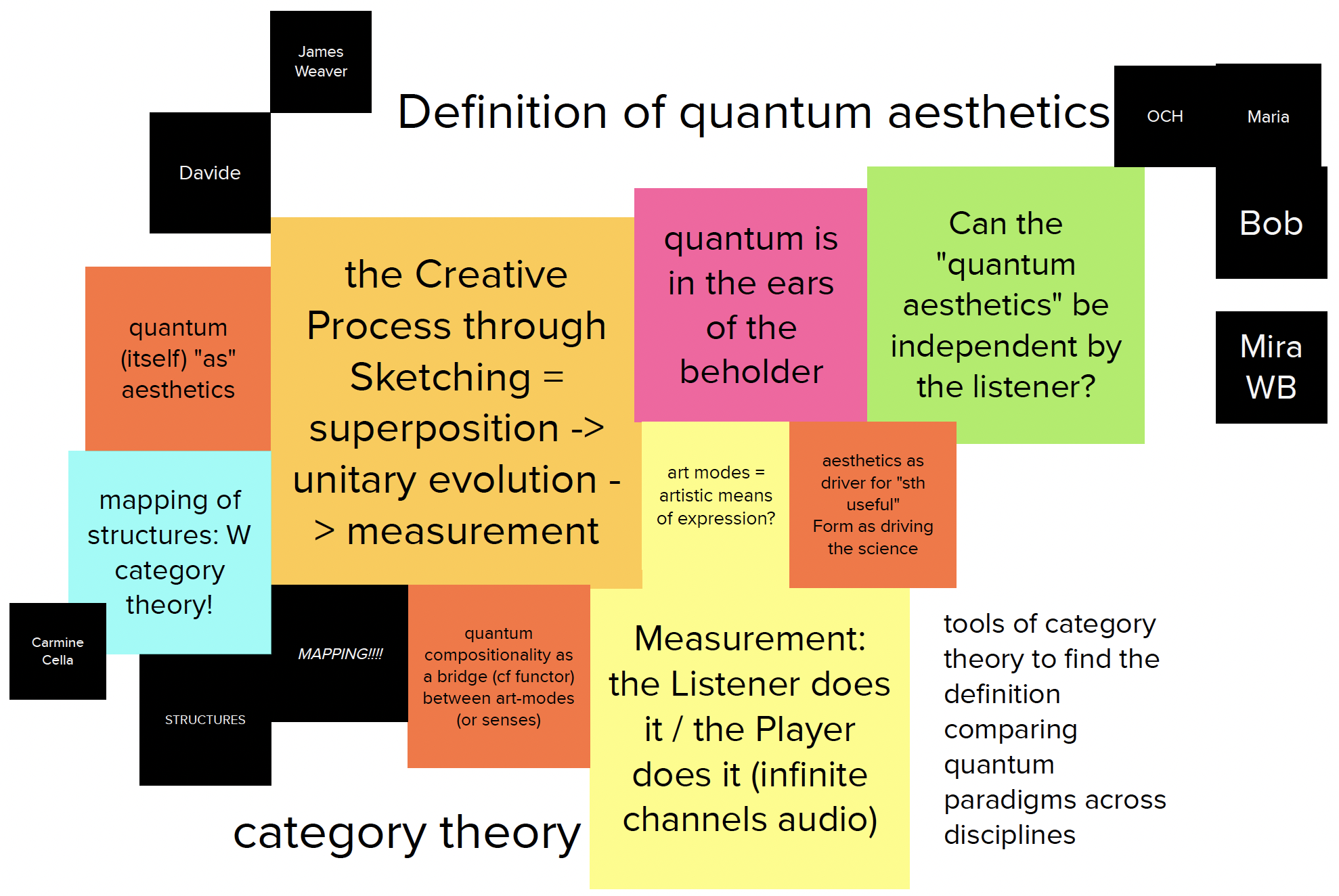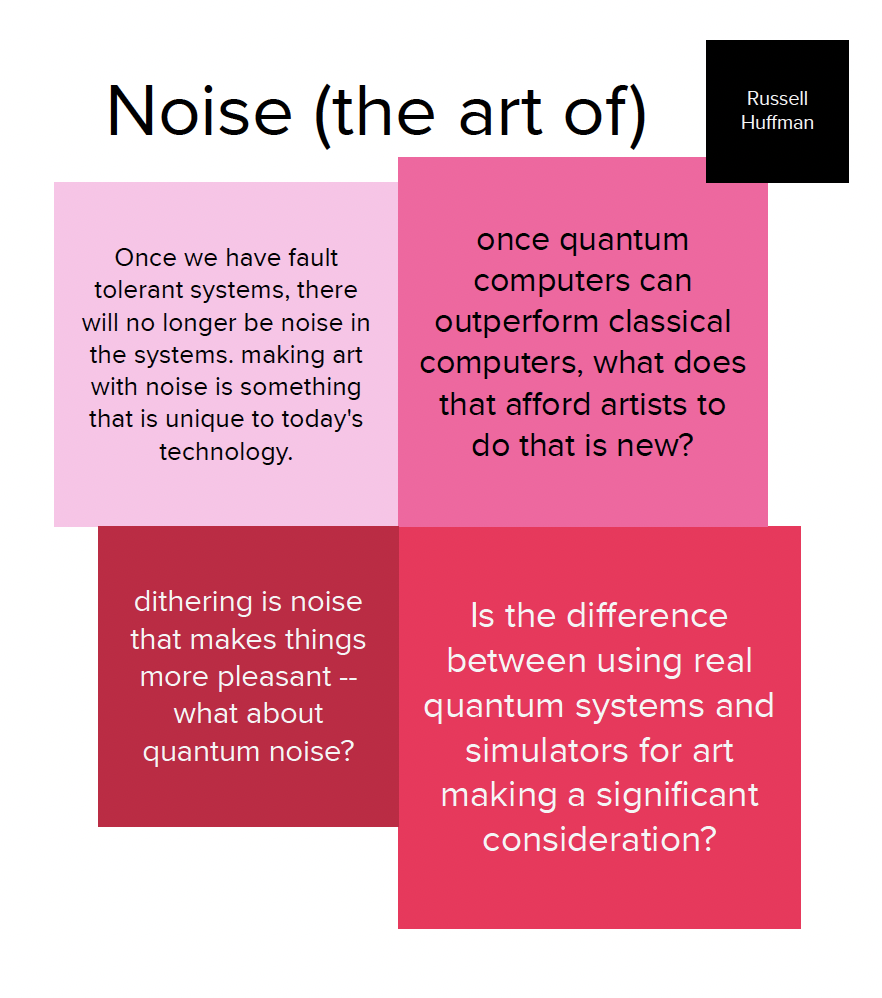Quantum Aesthetics
FOCUS GROUP REPORT
1st International symposium on quantum computing and musical creativity [2021-11-20]
Index
Overview
On November 20, 2021, a diverse group of professionals and researchers took part on a 3 hour focus group dedicated to discuss the use of Quantum Computers in the service of Art, with the intention of leading to potential collaborations and a collective creative approach to understand this new paradigm. In particular, this group discussed Quantum Aesthetics.
overall aims
finding out what the impact of quantum computing is on the artistic practice
define what we mean by quantum aesthetics, since computational aesthetics already has strange implications with the artwork done by machines, that create art based in form, not in content, because content involves emotions which machines don’t have
can we then separate emotion from aesthetics? We also need to define what we mean by aesthetics
overall aims
find potential opportunities for collaboration between the participants in the room.
there is a missing word in the middle. Quantum is not just an adjective. “Quantum enabled aesthetics” or “Quantum inspired aesthetics” could mean very different things.
brainstorming
The first main task consisted of brainstorming using virtual sticky notes, in response to the theme, the aims, or the pre-selected prompt questions that were presented in the board.
The follow up task required organizing the sticky notes, building spatial and color-coded relations. At the same time, the participants started discussing the most intriguing ones like the idea of art qubits, quantum mechanics as the paint or the paintbrush, and even quantum computing as a tool vs a collaborator.
since there isn’t currently an efficient way to get classical data into a quantum computer we need to resort to training meaning inside a quantum computer.
brainstorming
After a break, the participants were asked to group and re-organize all the sticky notes in order to discern the emerging themes. And at the end, each participant added a small sticky note with their name next to the themes they would be interested in continuing working on.
emerging themes
The use of Quantum Mechanics and Quantum Computing opens room for new types of artistic collaborations where artworks may be entangled, or using the Quantum Computer as an artistic collaborator - whether knowingly or not (i.e. passing a Turing test).
Quantum Aesthetics may shed light into the wider field of connection between Art and Science - maybe we can use Art to better understand Quantum Computing, or vice-versa, maybe we can use Quantum Computing to deepen our understanding of Art. Underlying this topic is the promotion of a diversity of backgrounds to open new perspectives and understanding.
Davide shared a score for the listener by John Cage with a set of instructions across time to break the ice about discussing time evolution in quantum systems. The hope is to get some insight about quantum evolution by defining some art-qubit and see how they evolve over time, as well as to understand the role of the listener, and not only the performer.
We can think of Quantum Computing as the brush, the tool that draws the artwork, or as the paint, the material means of the artwork. In other words, is Quantum Computing the means to create art, or the artwork itself? This theme also touches on the topic of generative artwork and generative quantum computing.
We proposed different avenues to describe Quantum Aesthetics. And because these can involve Quantum Artworks in different media, some abstract tools in Category Theory were thought to help mapping and make comparisons between different fields and finding definitions.
Intrinsically related to all the other themes, Transmedia intends to look at the compositional process across media using Quantum Computing as a single practice capable of emerging a self-referential aesthetic. On the same token, the relation between composer and listener is expected to be redefined here (cf the measurement paradigm).
It’s been possible to make art or music inspired by quantum mechanics for quite a while, but only recently we’ve been able to use real hardware as a part of the process, but these machines are quite noisy. So, perhaps once we have fault tolerant quantum computers (which implies the suppression of noise) we will lose part of the aesthetics.
Organization
participants
Sieglinde Pfaendler
Omar Costa Hamido
Mira Bauers-Wolf
Arthur Miller
Omar Costa Hamido
James Weaver
Russell Huffman
Maria Mannone
Davide Rocchesso
Carmine-Emanuele Cella
Bob Coecke
moderator:
Mira Bauers-Wolf







